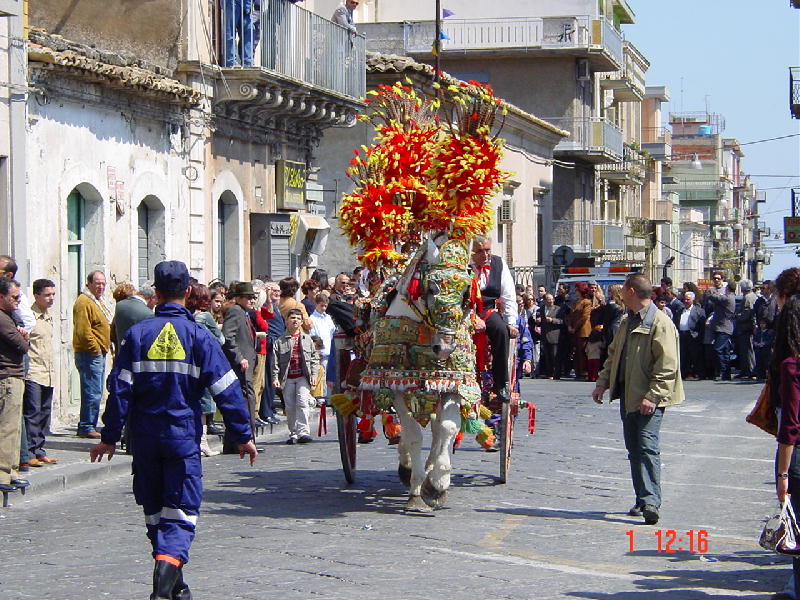
The territory and the economy
The Municipality of Carlentini has a fairly large territory that is extends for more than 158 sq km. It borders those of Catania, Lentini, Francofonte, Buccheri, Melilli, Augusta and Sortino. It includes a mountain area with the hamlet of Pedagaggi and a sea coast at the mouth of the San Leonardo River.
Citrus farming is still the main profitable source of the population, with some livestock settlements. For some years we have looked at the possibility of exploiting the artistic and landscape resources of the territory.
Festivals and traditions
In the Easter period, the day of Easter Monday is dedicated to the Feast of St. Joseph, undoubtedly one of the oldest, most significant and traditional. Even today, after many years, a young man, a girl and a child, who wear the shoes of the Holy Family, after the dressing ceremony and after the celebration of the solemn Mass in the church of Carmine, they walk in procession the main streets of the city and then arrive in Piazza Diaz.
The party then continues in the afternoon with the sale at the ioncanto, on a special stage set up for the occasion, of the gifts offered to the Saint. During Holy Week, on the Friday before Easter, the Carlentinian faithful attend with profound devotion to the rite “split to the cross” of the deposition of Christ from the Cross carried out by eight people dressed in white with the semi-covered garment.
At the end of the rite, the procession follows through the city streets of Our Lady of Sorrows and of Christ.
Saint Lucia, patroness of Carlentini
The origin of devotion to Saint Lucia can be traced back to the period of the very foundation of the city. In fact, the inhabitants of Carlentini on 15 March 1621, according to the ancient custom of putting the city under the protection of a saint, chose Saint Lucia to “Patron Protect and Lawyer of the city” asking for its official proclamation. On 20 October 1872 the Council decided to celebrate the Patroness on the fourth Sunday of August of each year tradition remained unchanged until today.
The celebrations last three days and begin on Saturday with the exhibition of the Holy Relic, a silver forearm that houses a bone fragment of the Saint, the Sunday morning, at 10.00, after the celebration of Holy Mass, we can attend the triumphant exit of the venerated simulacrum, driven by the “devotees of Saint Lucia”, accompanied by Deputation and by Civil and Mild Authorities
written by David Robertson - Last update: 27/10/2021
This guide has been translated automatically through a third party service. Visititaly offers these automatic translations to help site visitors, however the automatic translations may contain inaccuracies, errors or inaccuracies. You can contact us to report inaccuracies or errors and we will check the translation.